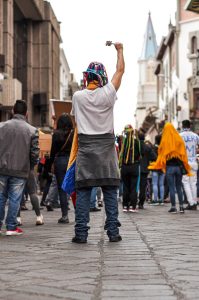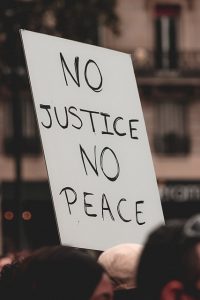【2025年最新】ネパール抗議デモの真実——若者の叫びと日本で暮らす留学生の声

【2025年最新】ネパール抗議デモの真実——若者の叫びと日本で暮らす留学生の声
ネパールで広がる若者の抗議デモ
2025年9月、ネパールで前例のない規模の抗議デモが発生しました。
主導しているのは「ジェネレーションZ」と呼ばれる若者世代。
SNS遮断をきっかけに、長年の政治腐敗や縁故主義への不満が爆発し、
首都カトマンズを中心に激しい抗議行動が続いています。
私の地元にある自動車専門学校に通うネパール人の青年も、その現実を切実に感じていました。
彼との対話から浮かび上がったのは、混乱のただ中で生きる若者の「生の声」でした。

デモが拡大した背景
SNS遮断が引き金に
2025年9月4日、政府はFacebookやTwitter、YouTubeなど
主要SNSの国内アクセスを突然遮断しました。
表向きの理由は「現地法人登録の不履行」でしたが、
若者たちはこれを「言論弾圧」と受け止めました。
SNS利用率が約9割に達するネパールにとって、社会生活を直撃する出来事でした。
政治腐敗と不公平への不満
長年にわたり続く汚職やコネ採用。政治家や官僚の子弟が特権を享受する一方で、
若者の失業率は20%を超えています。
SNS上では「ネポキッズ」という言葉が拡散し、不公平に対する怒りが大きなうねりとなりました。
政治の停滞と不信感
2008年の王政廃止後、政権は14回も交代しましたが、いずれも任期を全うできず。
こうした政治の停滞が、若者たちの強い不信感を生み、今回の爆発的な抗議行動に火をつけました。
現地の状況と深刻な被害
デモは首都カトマンズを中心に数千人規模に拡大。国会議事堂や官庁街、高級ホテルが
襲撃・放火され、街は一時的に麻痺しました。
警察や軍が鎮圧に乗り出し、死者50人以上、負傷者1,300人超と
いう大きな犠牲が出ています。
9月9日にはKPシャルマ・オリ首相が辞任。現在はスシラ・カルキ元最高裁長官を
暫定首相候補とする動きが進んでいますが、
憲法上の課題や政党間の駆け引きが障壁となっています。

日本で暮らす留学生の声
私と食事を共にしたネパール人の青年は、スマホに届いた「議事堂が炎上する動画」を
涙声で見せてくれました。
「友人を含め若者が80人も死んだ」と繰り返す彼の姿に、私は言葉を失いました。
それでも彼は、翻訳アプリを通してこう語りました。
「ネパールは小国だけれど、インドや中国とは良い関係を続けたい」
「アメリカには干渉されたくない」
「自分たちの力で開発していきたい」
その言葉には、他国に頼らず自分たちの未来を切り拓こうとする強い意志が込められていました。
私はその気持ちに感心しつつも、実現には大きな困難が伴うことも感じずにはいられませんでした。
今後の展望と国際社会の反応
暫定政権が透明性ある改革を進められるかが最大の焦点。
インドや中国は「安定を望む」と声明を出し、アメリカを含む西側諸国も
「人権尊重と平和的解決」を呼びかけています。
デジタル世代による市民運動の可能性と、既得権益に固執する政治体制の弱さが
同時に浮き彫りとなりました。
今回の出来事は、ネパールだけでなく世界全体が抱える課題を象徴しているのかもしれません。

おわりに——若者の声は未来を変える
日常を過ごす日本にいると、遠い国の出来事のように思えます。
ですが、インターネットを通じてつながったこの時代、ネパールの若者が命を懸けて訴える
「変革の声」は、決して他人事ではありません。
彼の言葉が示すように、未来を創るのは「外部の力」ではなく「自分たちの力」。
その純粋で強い意志が、いつか新しい社会を築く原動力になることを願っています。
続く——。

【English Version】
The 2025 Nepal Protests: Voices of Change and Students Abroad
Background of the Nepal Protests
In 2025, Nepal was shaken by large-scale protests that
quickly spread across the country.
What began as a reaction to the government’s decision to restrict access
to major social media platforms,
such as Facebook and TikTok, soon grew into widespread anger over
corruption and inequality.

For years, many young Nepalese have felt frustrated by political stagnation.
Promises of reform remained unfulfilled, job opportunities were scarce,
and many felt that only the political elite continued to benefit.
The shutdown of social media acted as the final spark,
fueling massive demonstrations across Kathmandu and beyond.
The Reality on the Ground
The protests, which began as peaceful gatherings,
escalated into violent clashes between demonstrators and security forces.
Reports indicate that more than 50 people have lost their lives,
and over 1,300 have been injured.
Images of burning vehicles and
the parliament building engulfed in flames shocked the world.
Under mounting pressure, Prime Minister Pushpa Kamal Dahal
(widely known as Prachanda) was forced to resign.
A caretaker government has since been established,
but uncertainty looms over Nepal’s political future.

Voices of Nepalese Students in Japan
While the world watched events unfold,
Nepalese students studying in Japan expressed their deep concern.
One student told me:
“I was devastated when I saw the parliament building burning and heard that
some of my friends had been killed.
But at the same time, I believe this is our generation’s responsibility.
We cannot rely on others to fix Nepal. We must take action ourselves.”
For these students, the protests represent more than political turmoil—
they symbolize a chance to reshape their nation’s destiny.
Many emphasize that Nepal should not depend on foreign powers such as India,
China, or the United States, but instead carve its own independent path forward.
The Future and International Reactions
With the resignation of the prime minister and
the formation of a transitional government, the question remains:
can Nepal’s leaders restore trust and implement real reform?
Internationally, neighboring India and China are closely monitoring the situation,
given their strategic interests in Nepal.
The United States and European nations have also expressed concern about
violence and the suppression of free speech.
Yet, perhaps the most significant factor is Nepal’s younger,
digital-savvy generation.
Their ability to organize, communicate, and amplify their voices—
even in the face of censorship—signals a new era of civic activism.

Conclusion: A Universal Struggle for Change
At first glance, Nepal’s protests may seem like a distant issue.
However, they highlight a universal theme:
young people demanding accountability, freedom,
and a future they can believe in.
From Kathmandu to Tokyo, the voices of Nepalese youth remind us that
the fight for dignity and justice transcends borders.
The struggle unfolding in Nepal today could well become a mirror reflecting challenges
faced by societies worldwide.

